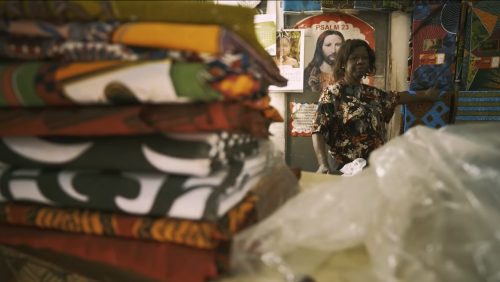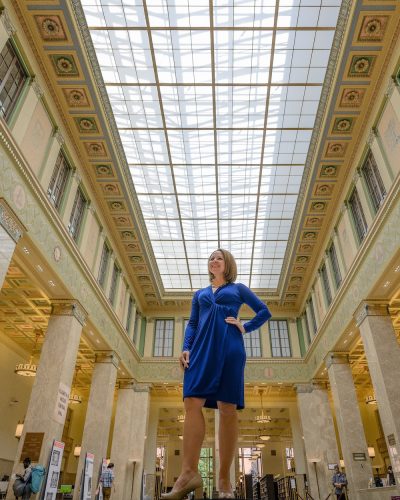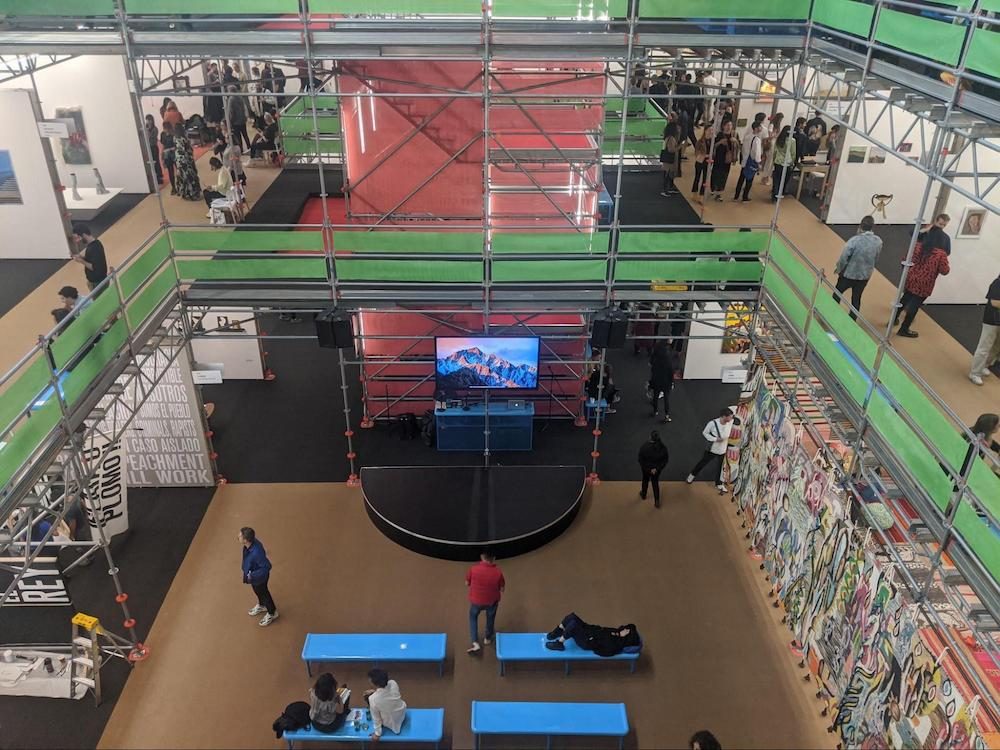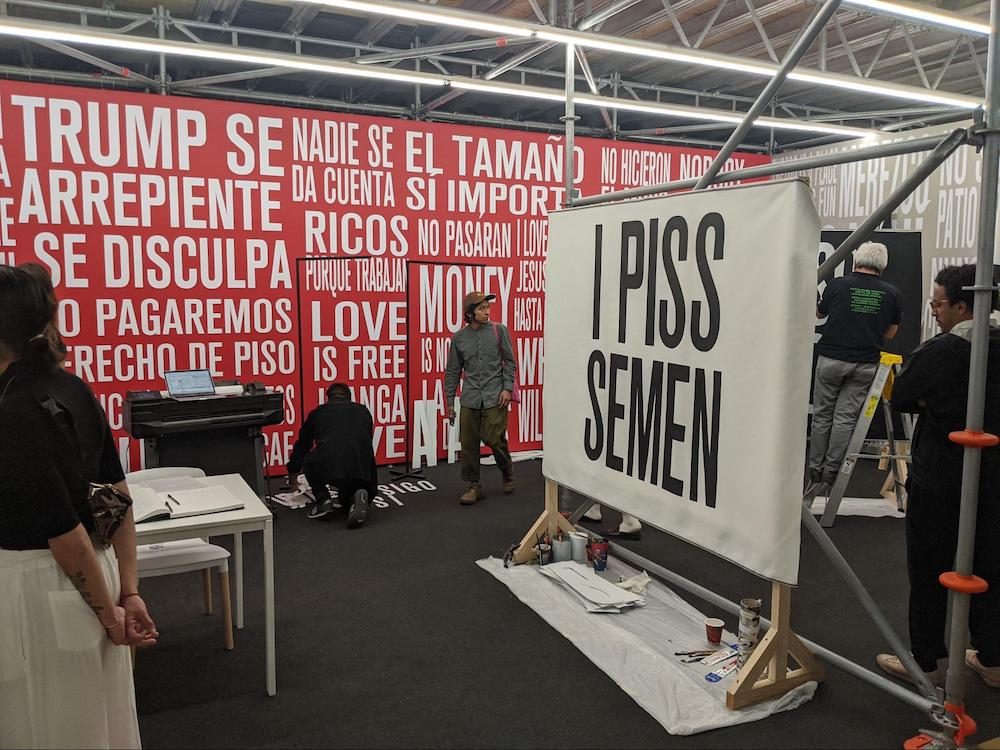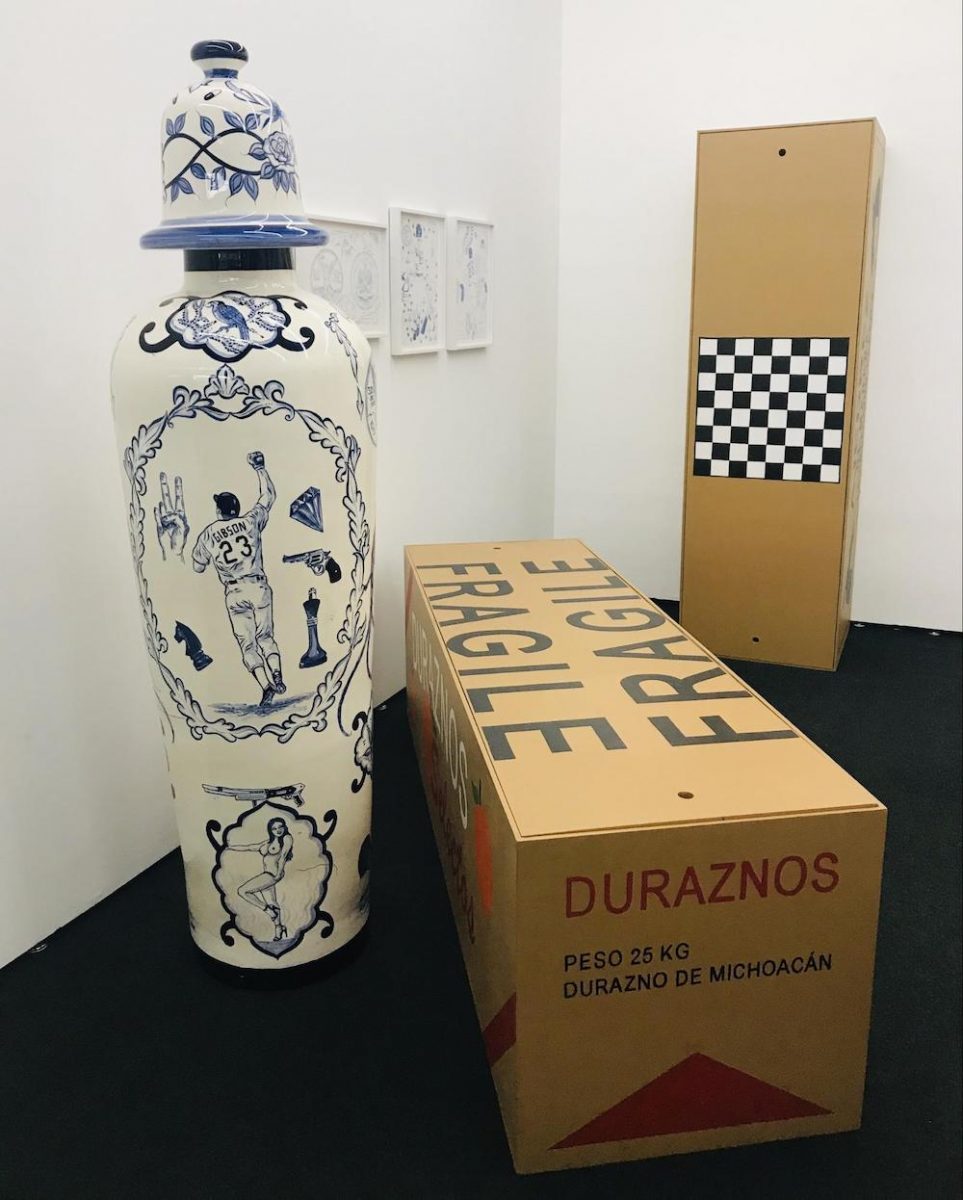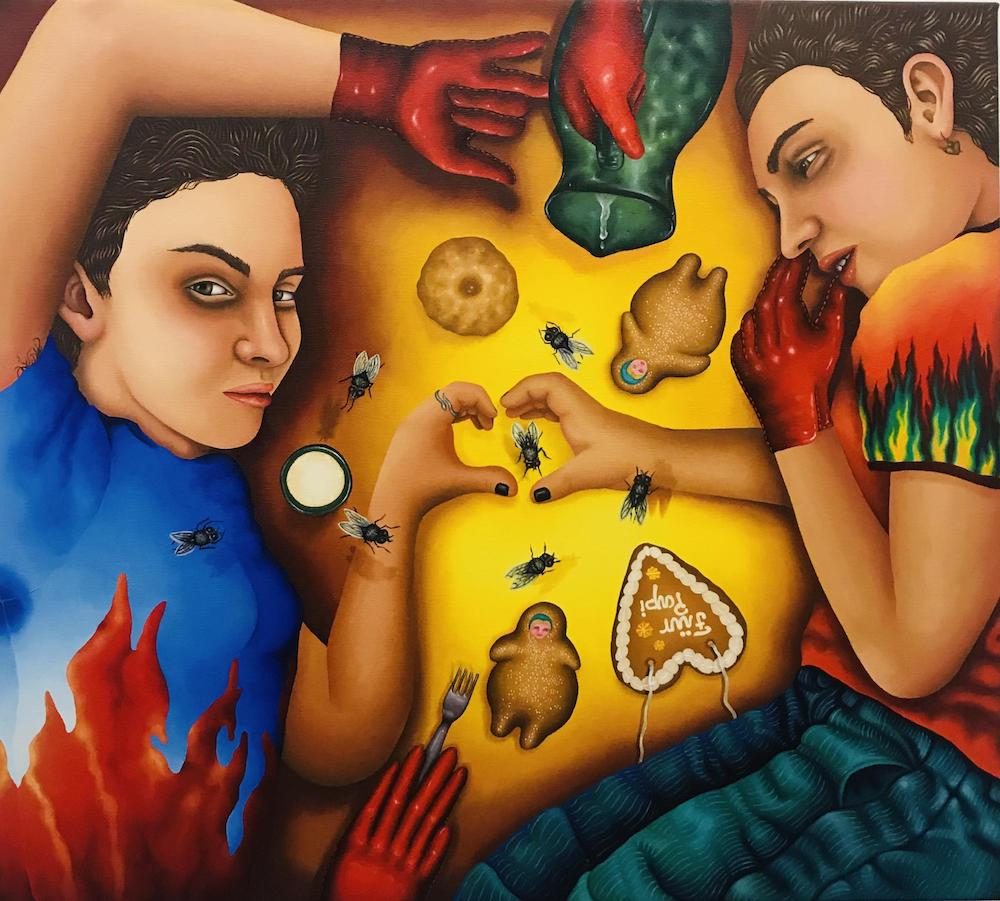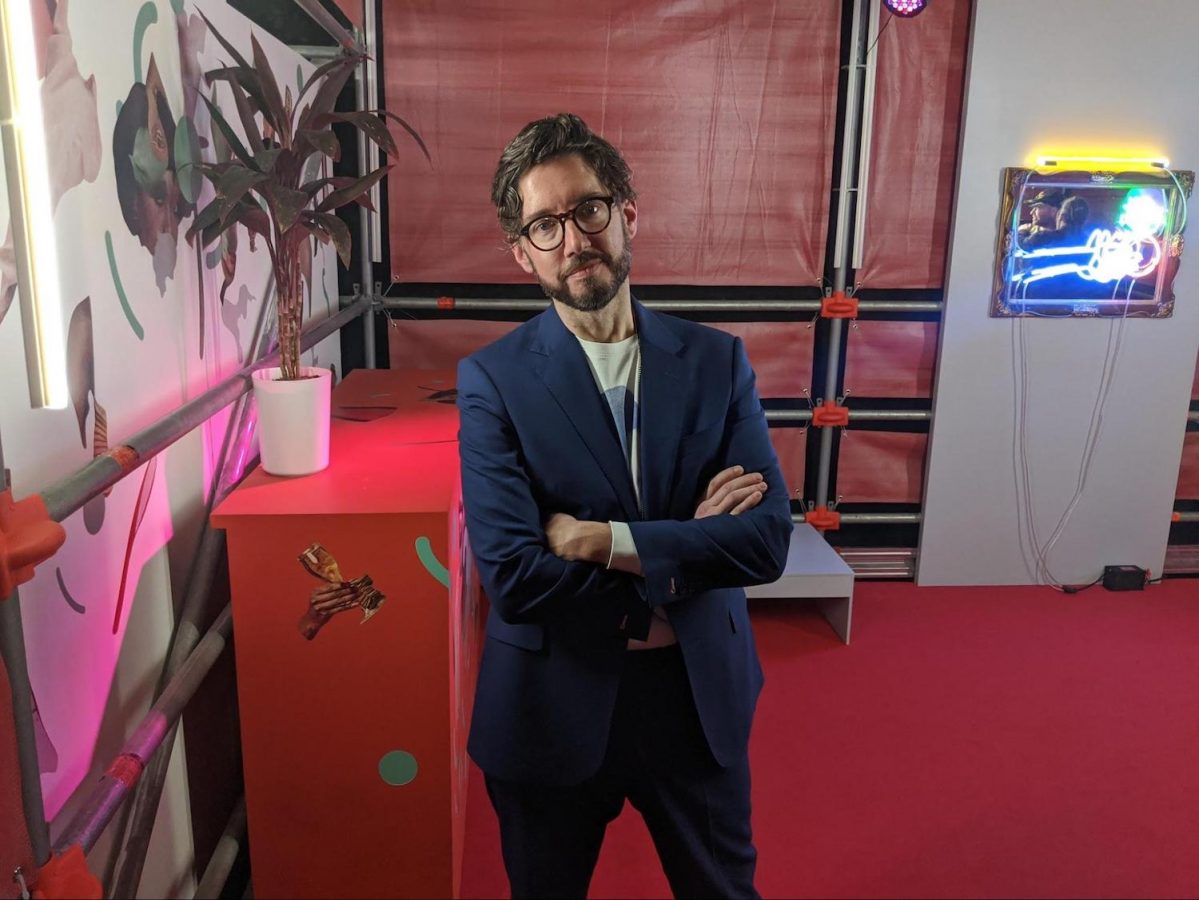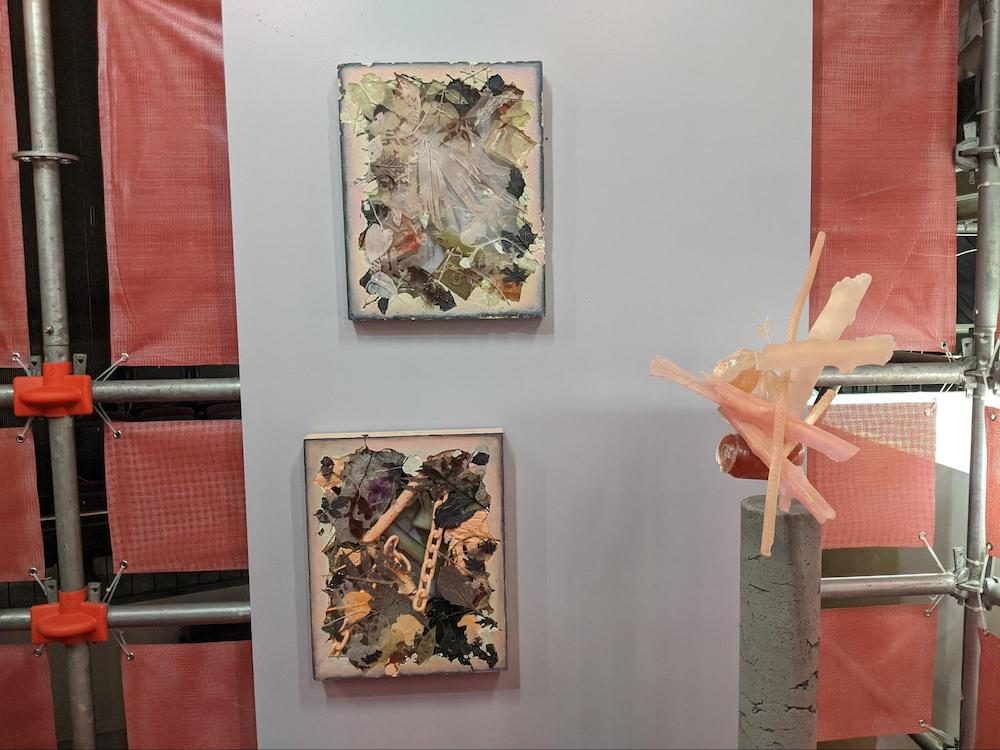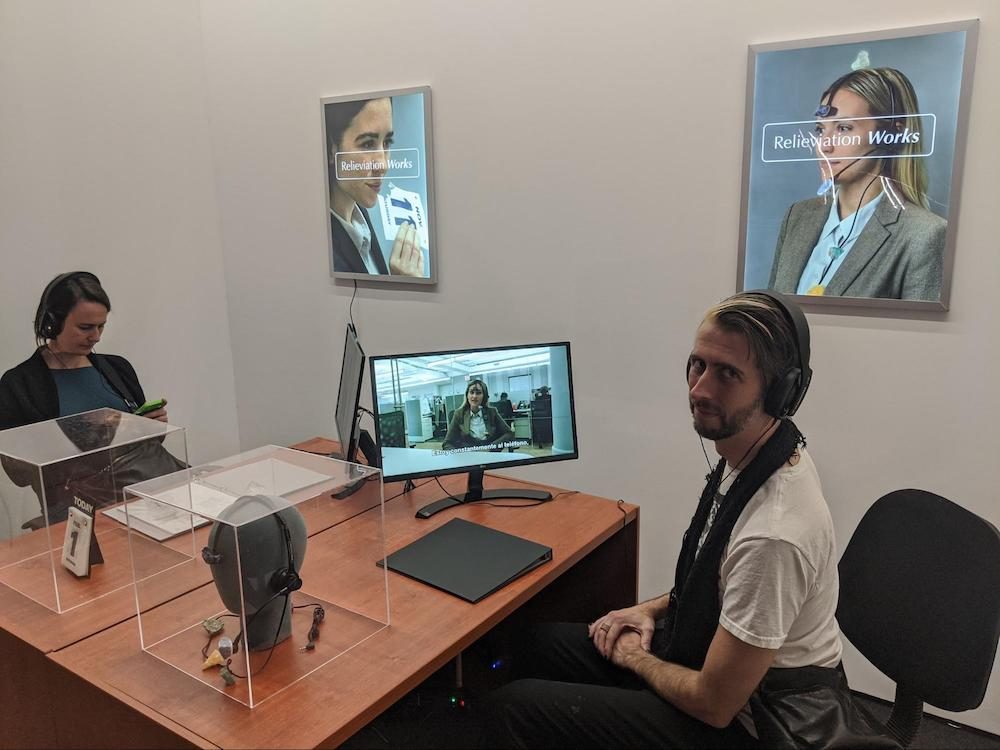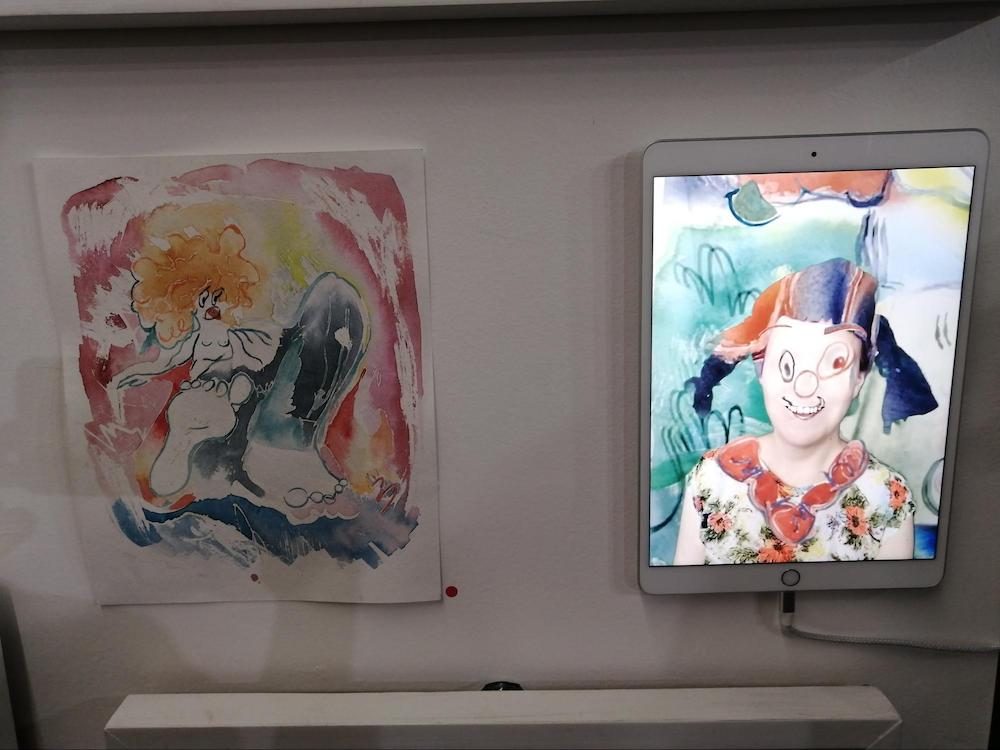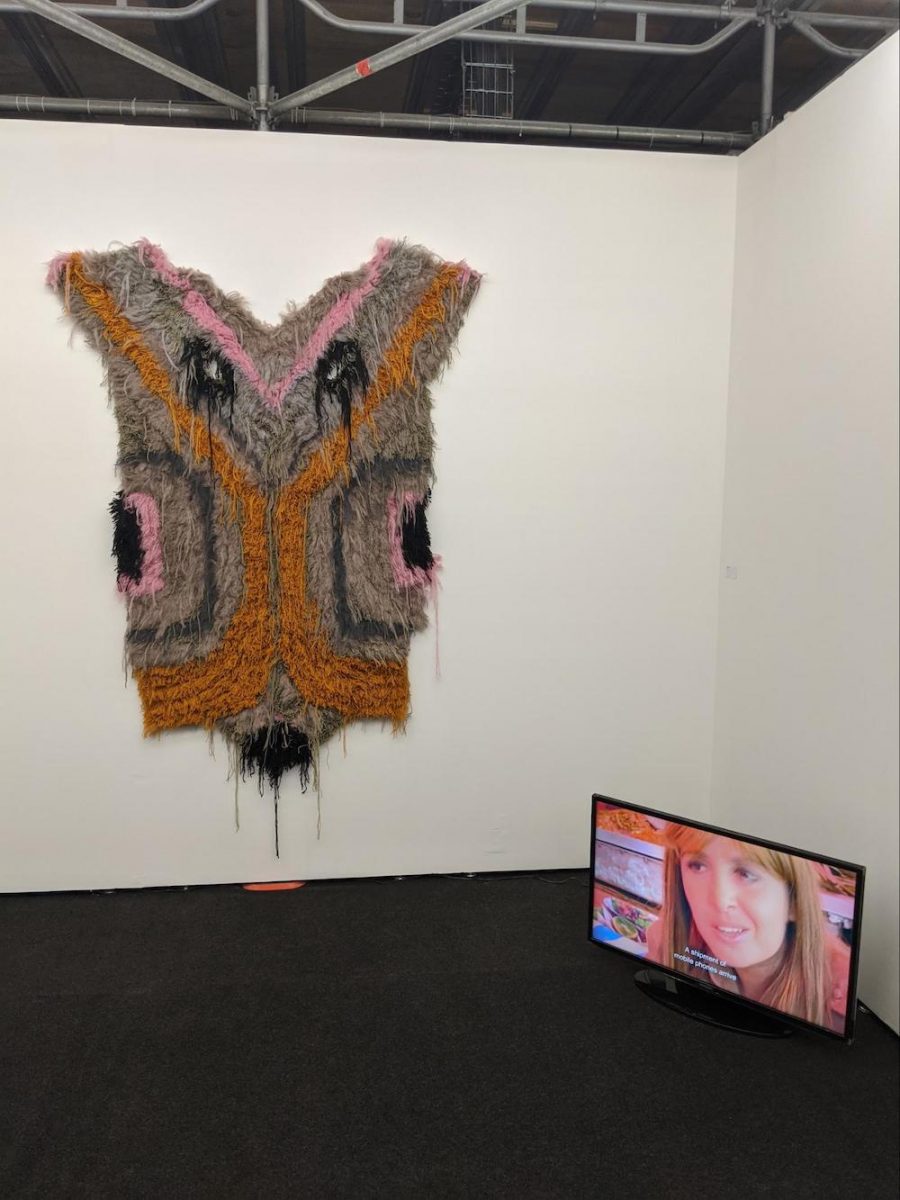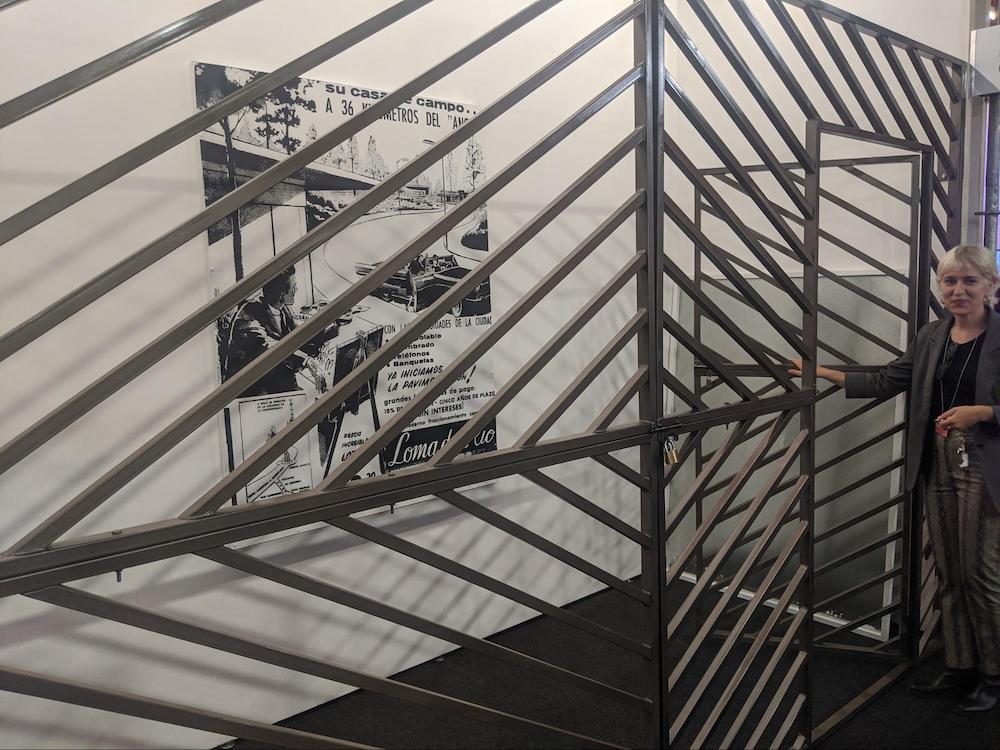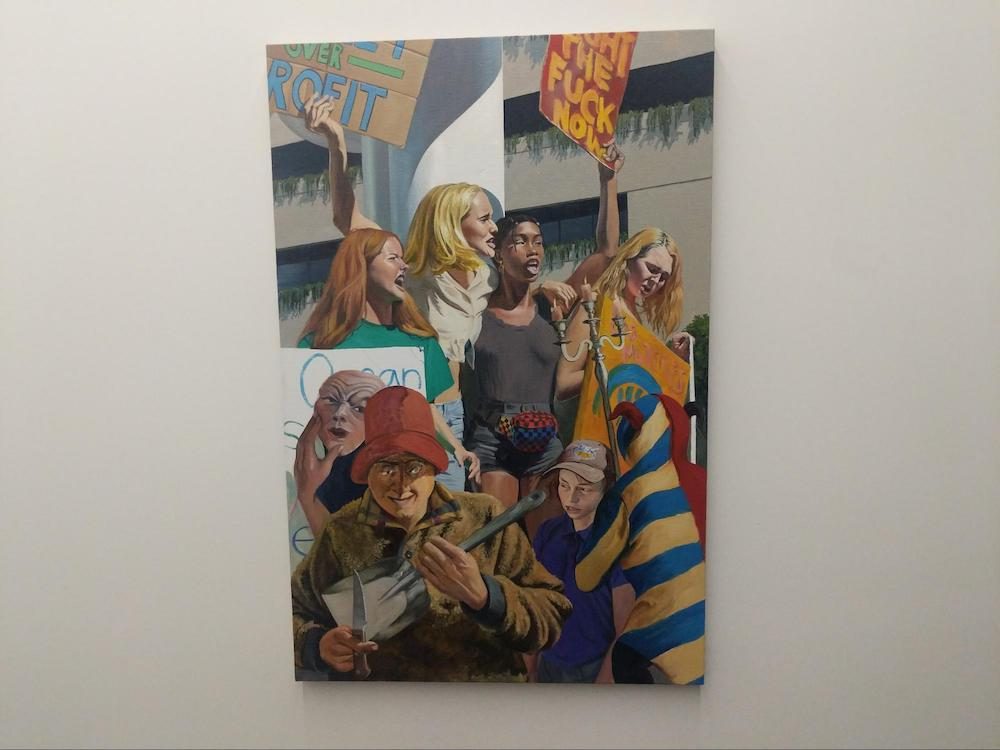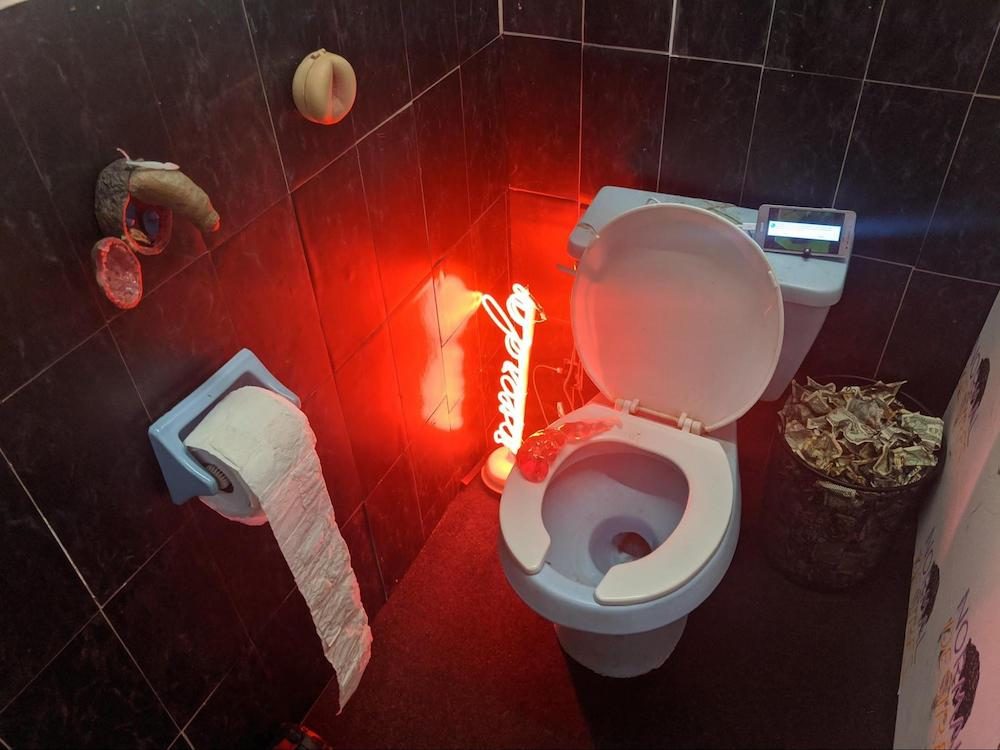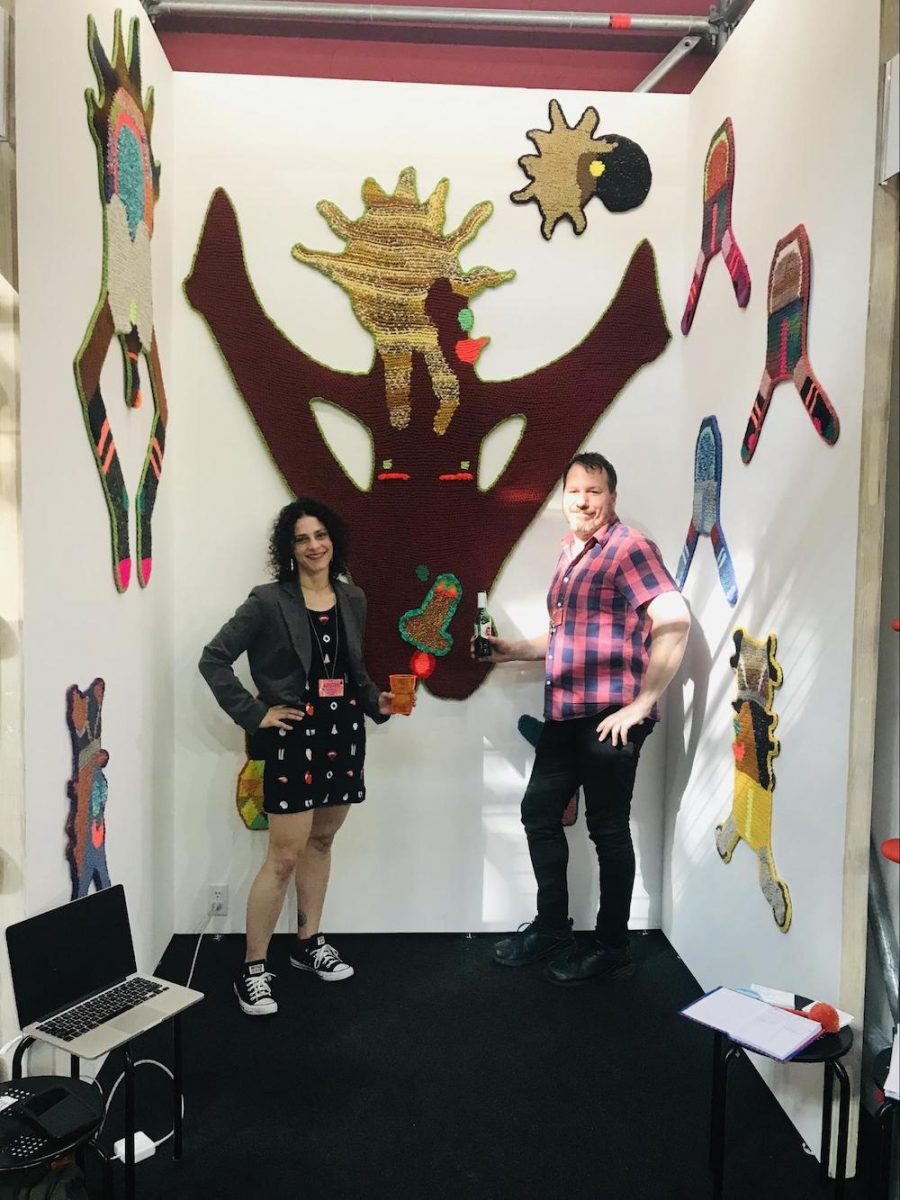Michael Anthony Farley: Material Art Fair moved to Frontón México, a quirky Art Deco jai-alai venue in the city center, in 2018. Ever since, it feels like the young fair has grown up both figuratively and literally. Local architecture firm APRDELESP designed an ingenious (if not vaguely panic-inducing, when Mexico City’s seismic instability is considered) proprietary fair lay-out that creates a singular art-viewing experience. Comprising a 3-D labyrinth of scaffolding, the vertical scheme makes everything in the fair seem visible, social, and in dialogue.
The first two years in this new venue, I have found myself thinking of the Borg cubes of “Star Trek” lore—massive machine ships where individuals from diverse societies are abducted and subsumed into a cybernetic collective consciousness. And at Material, I always think, “This is the collective I want to be assimilated into!” This is one of the few art fairs that actually makes me like art fairs and restores my faith in the art world and all its weirdness. (For example, any time I reference this very nerdy association to a complete stranger I meet at Material they exclaim, “OMG you’re so right!” and high-five me instead of giving me side-eye and discretely chortling as one likely would at the Armory, Basel, or most definitely FNAC).
But this year, looking out over the fair from an upper level, I thought instead of the Situationist artist/amateur architect Constant Nieuwenhuys and his vision for New Babylon—an international city built for creative play. Nieuwenhuys imagined an elevated human Habitrail that respectfully inserted itself above and around existing historic cities, spanning borders and offering a place where the free exchange of ideas and culture took precedence over sheer market forces.
I think both aesthetically and in spirit Material realizes a bit of that utopian ambition. Hanging out in a three-dimensional art playground delicately slotted into an old Art Deco jai alai court with artists and writers and all manner of creative weirdos from 37 cities across 21 countries sure felt like a Situationist dream. It was an association driven home by Italian/Austrian gallery Emanuel Layr’s booth, which was showing these mixed-media works by Tillman Kaiser, combining photographic techniques with oil paint (a strategy that’s popping up all over this week!) that really seem to channel the Situationist architectural aesthetic and spirit of experimentation. They’re also showing these disembodied breasts by Lena Henke, which might be the most vulnerable-seeming of all the breast art we’ve seen these past few days?
Cara: I will admit that I have seen a ton of breast and nipple sculptures in the past few days and I’m not sure what it all means? A zeitgeist of beautiful comfort perhaps?

Cara Ober: This was my first time visiting Material and it was the perfect fair for bringing friends who had never art fair-ed before. From the size which is manageable to the architecture which invites playful responses to the quality of artwork which is young, diverse geographically, and ambitious—it’s a fantastic starter fair. We bought a few affordably priced things from some of the presses and artist book areas, prints and totes mostly, and exchanged contact info with galleries we were interested in and have already gotten follow-up emails. This fair is friendly, fun, and artist-centric, more than market-centric, and the clothing here worn by patrons was as interesting as the art.
Michael: It’s worth mentioning that most gallerists I’ve talked to in the past say they do this fair for networking and the fun/social aspect rather than to make money. But this year I definitely overheard lots of excited chatter about a ton of work selling before the fair even opened to the public. It’s a great example of an accessible fair succeeding at all kinds of price points. A lot of the biggest names in the Mexico City gallery world participate in both the more established blue-chip Zona MACO and risk-taking, artist-centric Material, and I imagine it’s because they understand how important events like this are to Mexico’s thriving art ecosystem.
I wish Baltimore had something like this! If the few commercially viable galleries in Baltimore participated in events like the small Artist Run Art Fair—exposing their client base to the city’s fresh blood and younger arts spaces—it could be so transformative. Anyway, it’s not hard to see why sales were strong this year. There was literally so much good work we could probably spend a month writing glowing reviews of booths. Below, here’s just a fraction of what was noteworthy:
